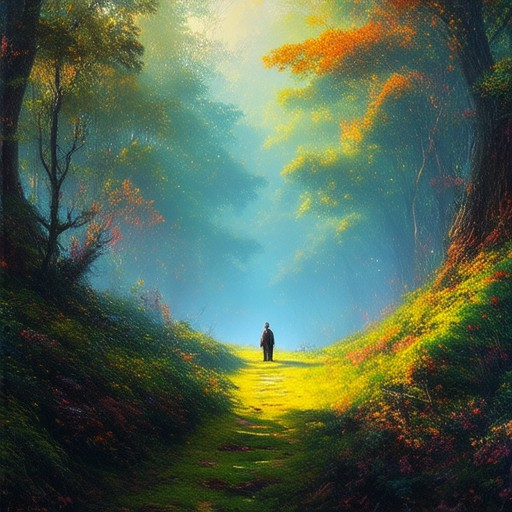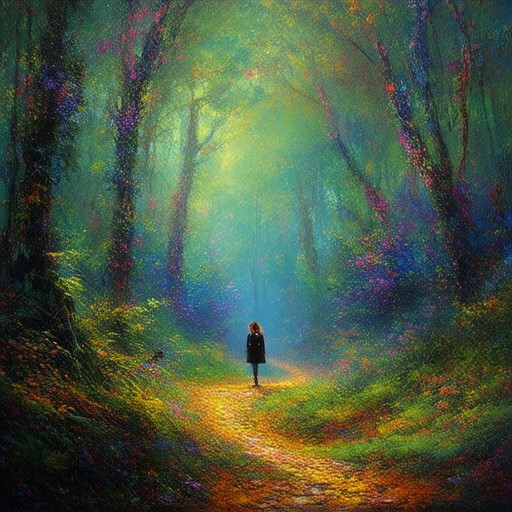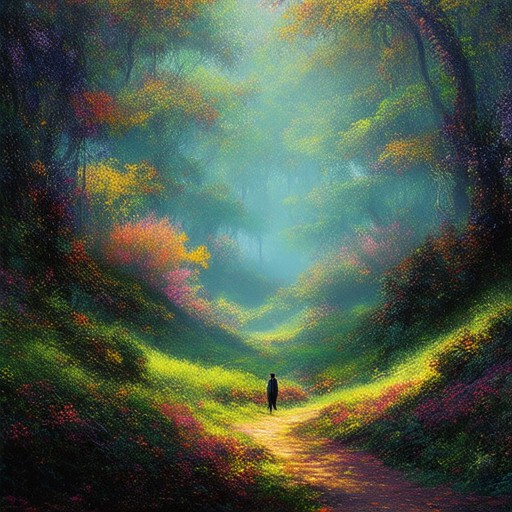Embarking on the art process as a beginner can feel overwhelming, with countless techniques, tools, and styles to navigate. Whether you’re drawn to painting, drawing, or exploring other creative mediums, finding the right path to master the basics can seem daunting. This comprehensive guide aims to demystify the art-making process, offering a clear, step-by-step approach tailored to individuals at any skill level. From understanding the fundamental stages of creation to mastering essential elements and principles, this resource provides actionable strategies to kickstart your artistic journey. Discover how to overcome common challenges, develop a personalized routine, and stay inspired while embracing the joy of artistic expression. Whether you’re looking to refine your skills or simply dip your toes into the world of art, this guide is designed to empower you to create confidently and evolve as a passionate artist.
Key Takeaways
- Grasp the 7 art elements to build a solid foundation for creating compelling artwork.
- Apply the 7 art principles to craft balanced, harmonious, and visually appealing pieces.
- Explore 8 art forms to discover your unique creative outlet.
- Use color and value effectively to evoke emotions and add depth to your work.
- Practice observation and experimentation to enhance your artistic skills.
- Study great works to learn masterful techniques and approaches.
- Choose the right medium for authentic and meaningful self-expression.

What Are the 7 Stages of Art?
The journey of an artist is a dynamic and transformative process, encompassing various phases of growth, experimentation, and mastery. Below, we outline the seven primary stages of artistic development, offering insights into how an artist evolves over time.
1. Emerging Artist
At this stage, the artist begins to explore their creativity without formal training. They experiment with basic tools and materials, often focusing on personal expression rather than technical precision. This phase is characterized by spontaneity and a lack of self-consciousness.
2. Developing Style
As the artist gains confidence, they start to develop a unique style. This involves experimenting with color, composition, and medium to find a personal aesthetic. While still learning, mistakes become opportunities for growth, and the artist begins to establish a recognizable signature.
3. Mastering Techniques
This stage marks the transition from experimentation to deliberate practice. The artist focuses on refining their skills, studying the works of masterpieces, and mastering traditional techniques. Their work becomes more polished and structured, though they continue to push boundaries.
4. Creative Exploration
During this phase, the artist feels a strong pull toward innovation. They explore unconventional materials, perspectives, and themes, often challenging conventional norms. This stage is marked by a sense of freedom and a desire to express complex emotions through their artwork.
5. Portfolio Development
As the artist grows, they begin to curate their body of work, selecting pieces that reflect their evolution. This phase involves critical self-reflection and strategic planning, often leading to exhibitions, competitions, or gallery showings.
6. Public Exhibition
Once the artist has a substantial body of work, they move into public spaces or galleries. This stage requires adaptability, as the audience’s reactions and feedback shape their approach. The artist learns to communicate their vision effectively and engage with the broader public.
7. Legacy and Impact
Finally, the artist transitions into leaving a lasting impact on the world of art. Their influence extends beyond their lifetime, inspiring future generations. They may mentor others, contribute to cultural movements, or redefine artistic norms, ensuring their legacy endures.
By navigating these stages, artists evolve from tentative explorers to confident creators, leaving a meaningful mark on the art world.
The 5 Cs of Art
The concept of the “5 Cs of Art” is often used to describe the essential elements that define the art world and its practices. These Cs provide a framework for understanding the dynamics of art creation, appreciation, and cultural impact. Below is a detailed breakdown of each component:
- Collection : A collection refers to the gathering and ownership of art pieces. Personal collections allow individuals to curate their own unique showcases, while public collections, such as museums and galleries, preserve and display artwork for broader access. Digital platforms have made collecting art more accessible, enabling people to build virtual collections and explore diverse artistic movements.
- Community : The art community encompasses artists, collectors, curators, and enthusiasts who come together to share, inspire, and collaborate. Online forums, social media groups, and local art clubs have become vital spaces for artists to network, seek feedback, and discover opportunities. A strong sense of community fosters innovation and supports the growth of artistic movements.
- Culture : Art is deeply intertwined with cultural identity. Different cultures have unique artistic expressions, traditions, and values that shape the art created within them. The influence of global culture has led to hybrid forms of art, blending traditional techniques with contemporary themes. Understanding cultural contexts is crucial for appreciating the significance of artworks and their historical backgrounds.
- Collaboration : Artistic collaborations occur when creators work together to produce cohesive bodies of work. This could involve partnerships between artists, between artists and institutions, or between different disciplines. Collaborations often lead to innovative outcomes and provide opportunities for artists to expand their reach and impact.
- Creativity : At the core of art lies creativity—the ability to think critically, imagine new ideas, and express them in meaningful ways. Creativity is influenced by individual experiences, cultural surroundings, and technological advancements. Over time, societal changes have redefined what is considered creative, leading to the evolution of art forms and styles.
By understanding these five Cs, we gain insight into the multifaceted nature of art and its role in shaping societies. Each element contributes uniquely to the art ecosystem, fostering innovation, preserving heritage, and connecting people across generations.

What Are the 5 Steps of the Art Making Process?
The art-making process is a dynamic and evolving journey that often requires experimentation and refinement. Below are the five primary steps involved in creating artwork:
- Idea Generation
- Brainstorming concepts and initial ideas.
- Exploring themes, styles, and mediums.
- Considering subject matter and purpose.
-
Research & Inspiration
- Studying artists, movements, and cultural influences.
- Gathering visual references and materials.
- Analyzing color theory and composition techniques.
-
Planning & Sketching
- Creating detailed sketches and thumbnails.
- Establishing composition and proportions.
- Experimenting with techniques and tools.
-
Execution
- Translating ideas into the final piece.
- Applying textures, colors, and finishes.
- Refining details and achieving balance.
-
Review & Reflection
- Evaluating the completed artwork.
- Assessing strengths and areas for improvement.
- Documenting the process and planning next projects.
By following these steps, artists can systematically approach their creations, ensuring a structured and fulfilling artistic journey. Explore more tips and resources to enhance your creative process on our tutorial page.

The Seven Basic Elements of Art
The seven basic elements of art are essential components that artists use to create visual works. These elements are fundamental to understanding and analyzing art. Below is a detailed breakdown of each element:
- Line
- Lines are the simplest yet most powerful elements in art. They can be straight or curved, thick or thin, and serve as boundaries, edges, or paths.
-
- Horizontal lines
- Vertical lines
- Diagonal lines
- Curved lines
- Lines are used to define form, establish movement, and create rhythm in artwork.
-
Shape
- Shapes are two-dimensional forms created by lines. They can be geometric (like squares, circles) or organic (like mountains, trees).
-
- Geometric shapes: Square, Circle, Triangle, Rectangle
- Organic shapes: Mountain, Tree, Wave
- Shapes provide structure and can convey different moods depending on their design.
-
Texture
- Texture refers to the surface quality of an object or material. It can be smooth, rough, soft, or hard.
-
- Satin texture
- Matte texture
- Rough texture
- Smooth texture
- Texture adds depth and interest to a piece, making it more visually appealing.
-
Form
- Form refers to the three-dimensional aspect of art, giving objects their height, width, and depth.
-
- Cube
- Sphere
- Torus
- Pyramid
- Form is often achieved through techniques like shading, perspective, and foreshortening.
-
Space
- Space is the area around or within an object, creating a sense of depth and dimensionality.
-
- Positive space: The actual subject matter
- Negative space: The empty areas around the subject
- Artists use space to guide the viewer’s eye and create a resting point within the composition.
-
Color
- Color is the element that gives art its vibrancy and emotional impact. It can be warm, cool, bright, or muted.
-
- Primary colors: Red, Blue, Yellow
- Secondary colors: Orange, Green, Purple
- Tertiary colors: Lighter shades of secondary colors
- Analogous colors: Colors next to each other on the color wheel
- Complementary colors: Colors opposite each other on the color wheel
- Color theory plays a crucial role in determining harmony and mood in a piece.
-
Value
- Value refers to the lightness or darkness of colors, creating contrast and depth in a artwork.
-
- Light tones: Whites, Grays, Yellows
- Dark tones: Blues, Greens, Reds
- Tonal range: The progression from light to dark
- Value helps artists create a sense of space and depth, guiding the viewer’s perception.
Why These Elements Are Important
- These elements are the building blocks of art, helping artists communicate ideas, emotions, and stories.
- They provide structure, direction, and visual interest to artwork, making it more engaging and meaningful.
Applying These Elements in Art
- Understanding and effectively using these elements requires observation, practice, and purposeful application.
-
- Observe the world around you to identify lines, shapes, textures, and forms.
For further reading and resources, explore Artful Journey’s articles on each element of art. Additionally, learn more about the general concept of art elements on Wikipedia.
By mastering these elements, you can unlock your creativity and produce artwork that resonates on a deeper level with your audience.
The 7 Principles of Art
The 7 principles of art are essential guidelines that help artists create balanced, harmonious, and visually appealing artwork. These principles work together to guide the viewer’s eye and enhance the overall composition.
- Balance : Achieved through symmetry or visual weight distribution, ensuring stability and harmony in the artwork.
- Movement : Refers to the direction in which the viewer’s eye travels, creating a sense of dynamism and flow.
- Rhythm : Created through the repetition of elements, contributing to the artwork’s energy and momentum.
- Pattern : Involves the arrangement of shapes, colors, and textures over time, forming a cohesive design.
- Contrast : The difference between light and dark areas, adding interest and depth to the artwork.
- Unity : Ensures all elements come together to form a unified whole, creating a sense of harmony.
- Emphasis : Highlights the main subject, guiding the viewer’s attention to the artwork’s focal point.
These principles are fundamental in various art forms, helping artists convey their vision effectively. To dive deeper, explore our art tutorials and discover how these principles can transform your creations.

The 8 Forms of Art and Their Definitions
The world of art encompasses a vast spectrum of creative expressions, each serving as a unique medium for human emotion, culture, and imagination. Below is a breakdown of the primary forms of art, along with their definitions:
- Visual Arts
- Painting: Creation of images on canvas or other surfaces using colors and brushstrokes.
- Drawing: Expression through marks made on paper or other media, capturing shapes and forms.
- Sculpture: Formation of three-dimensional objects, often from materials like clay, stone, or metal.
- Performing Arts
- Theater: Dramatic performances involving actors, sets, and scripts to tell stories or explore themes.
- Dance: Movement-based performances that convey emotions, narratives, or musical rhythms.
- Music: Creation of sound through instruments, vocals, or composition, intended to evoke feelings or tell tales.
- Literary Arts
- Poetry: Writing of verses that evoke imagery, emotion, or ideas.
- Prose: Written works of narrative fiction, memoirs, or essays.
- Drama: Plays or scripts that present fictional scenarios for theatrical performance.
- Applied Arts
- Architecture: Design and construction of structures that function as spaces for living, work, or worship.
- Design: Creation of visual elements for products, branding, or interior spaces, enhancing functionality and aesthetics.
- Cinematic Arts
- Film: Visual storytelling through motion pictures, combining acting, directing, and cinematography.
- Animation: Creation of moving images through techniques like stop-motion or computer-generated methods.
- Digital Arts
- Digital Painting: Use of software tools to create artwork traditionally or via digital means.
- Graphic Design: Development of visual content for print, web, or marketing materials, utilizing typography and color theory.
- Fine Arts
- These encompass traditional mediums like oil painting, watercolor, and classical sculpture, often viewed in galleries or museums due to their aesthetic and cultural significance.
- Crafts
- Handmade items such as pottery, textiles, jewelry, or woodwork, emphasizing manual skill and creativity.
Each form of art provides a unique avenue for personal expression and cultural exchange, contributing to the rich tapestry of human history and creativity. Whether through the static beauty of visual art or the dynamic performances of theater, art continues to play a pivotal role in shaping our understanding of the world and ourselves.
[Visit Artful Journey](https://artfulljourney.com/) to explore more resources and discover the diverse forms of art that inspire creators worldwide.




0 Comments